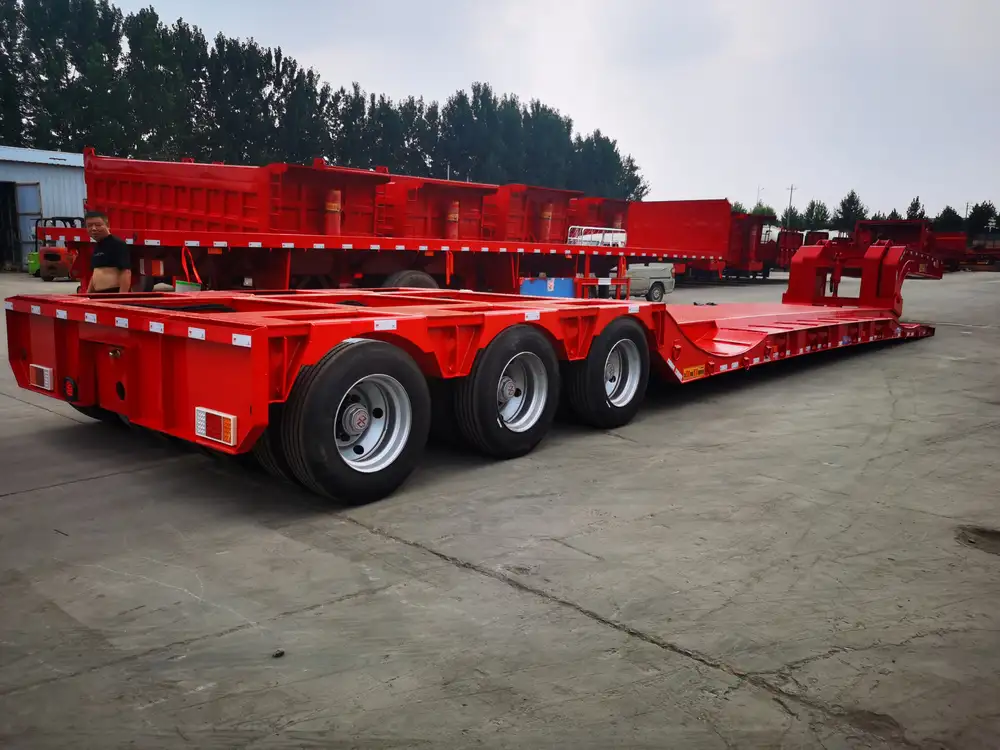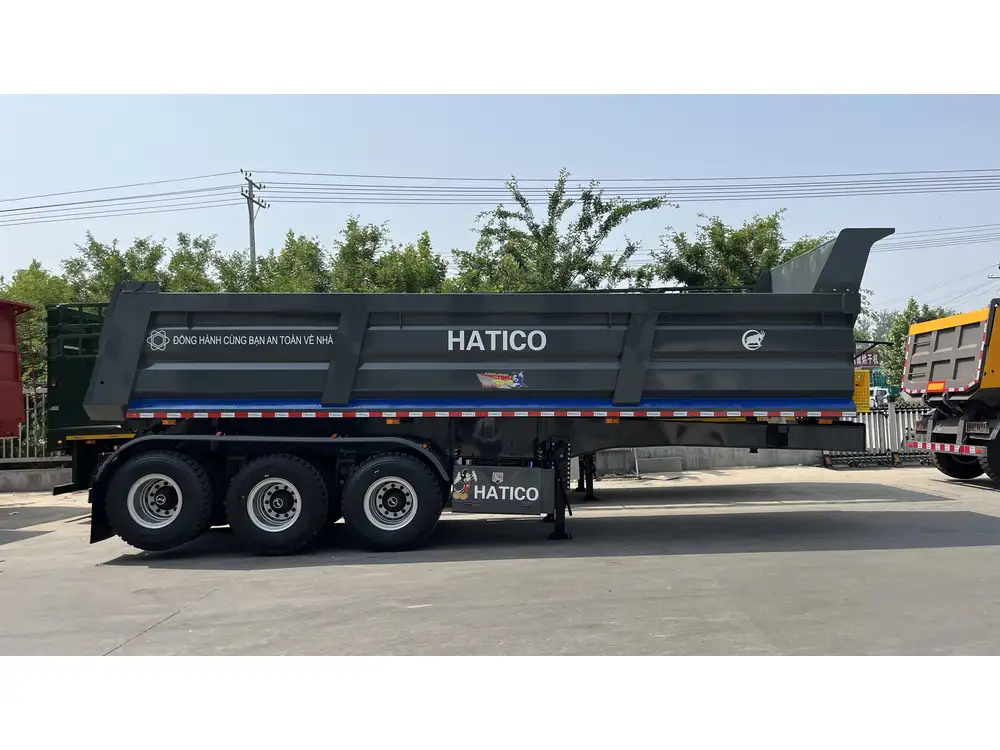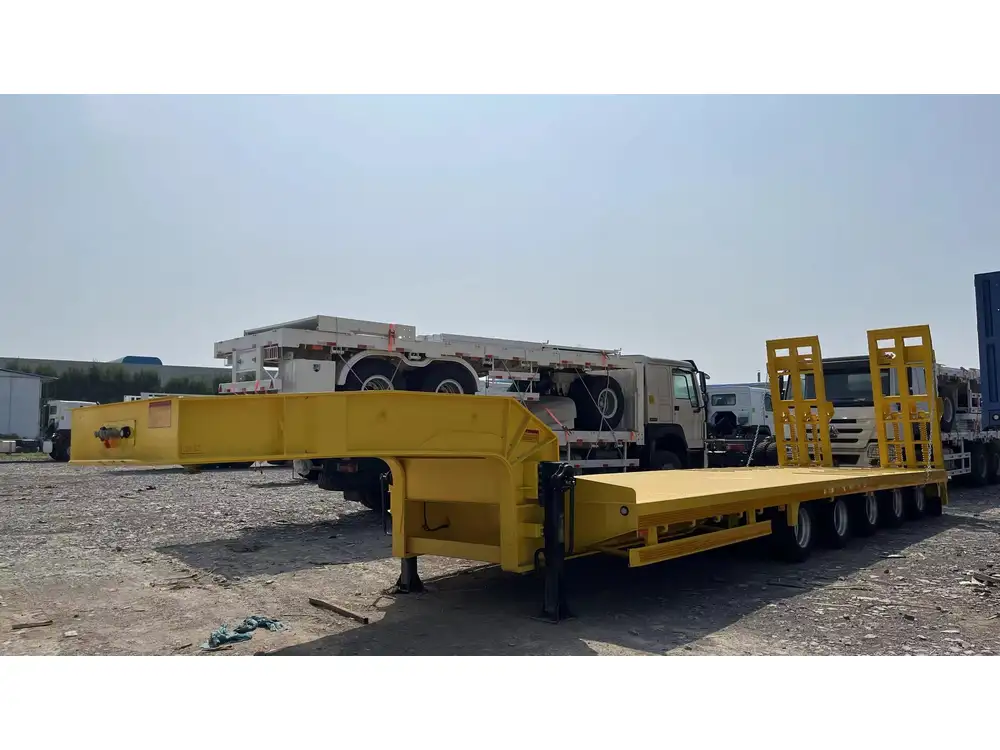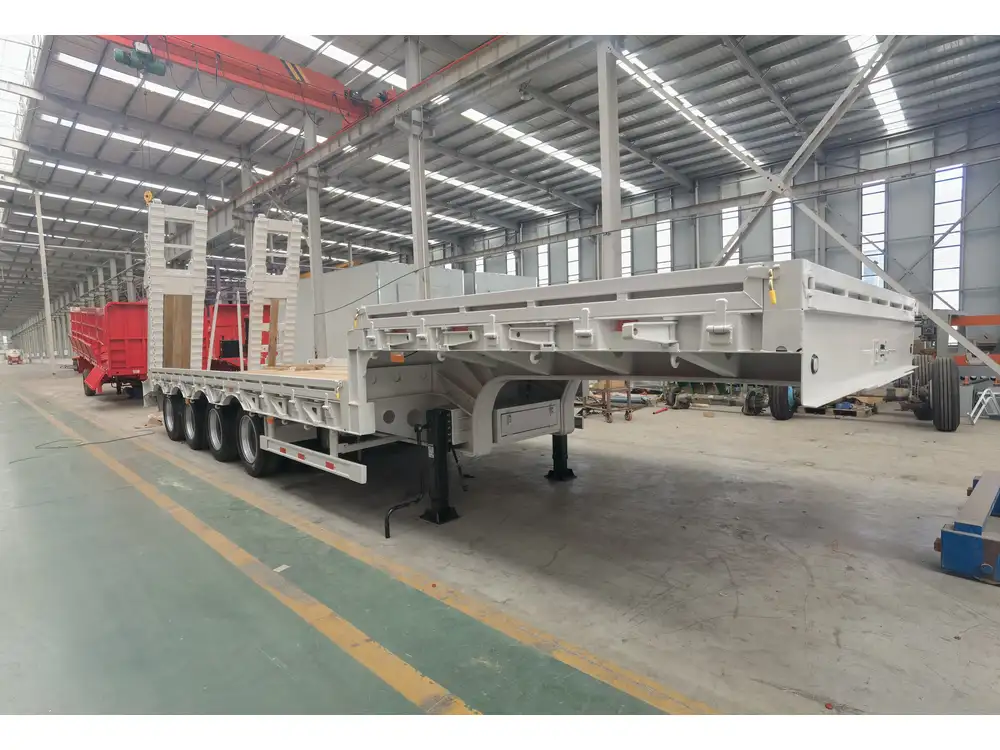When it comes to transporting oversized or unevenly weighted freight, understanding how to do an offset in a flatbed trailer can be a game-changer. An offset, which refers to the strategic placement of the load on the trailer, ensures better balance, improved maneuverability, and enhanced safety while on the road. It is not merely about shifting the freight; it is a meticulous process that requires a significant understanding of weight distribution, legal requirements, and the operational capabilities of the trailer. This guide will provide you with an in-depth view of how to perform offsets effectively on flatbed trailers, ensuring that you maximize efficiency and minimize risk.
Understanding Offsets: The Basics
What is an Offset?
In the context of flatbed trailers, an offset involves placing the load slightly off-center to balance the weight. This technique is commonly employed when dealing with heavy or unevenly shaped cargo that may not fit standard load dimensions.

Importance of Proper Offset
- Weight Distribution: Uneven weight distribution can lead to dangerous driving conditions, including trailer sway and reduced braking efficiency.
- Legal Compliance: Many jurisdictions enforce regulations regarding how loads should be distributed on trailers, making offsets an essential consideration.
- Fuel Efficiency: Properly offset loads can improve aerodynamics and fuel consumption during transport.
Common Scenarios for Offsetting
- Transporting construction materials that vary in weight and density.
- Shipping machinery or equipment with an uneven mass distribution.
- Moving bulk goods that require careful placement to comply with regulations.
Step-by-Step Procedure for Offsetting a Flatbed Trailer

Step 1: Assess the Load
Before any physical adjustments, a thorough analysis of the cargo is necessary. Here’s what to consider during this assessment:
- Weight: Determine the total weight of the load. Use accurate scales if possible.
- Dimensions: Measure the length, width, and height of the freight.
- Center of Gravity: Identify the center of gravity; this will be crucial for calculating the offset.
Step 2: Calculate the Desired Offset
After knowing the load parameters, calculating an appropriate offset is the next step. We recommend the following guideline:
- Rule of Thumb: For every 1,000 lbs of payload, consider offsetting by 1 inch to the opposite side of the trailer’s axle to maintain equilibrium.
| Payload Weight (lbs) | Recommended Offset (inches) |
|---|---|
| 5,000 | 5 |
| 10,000 | 10 |
| 15,000 | 15 |
This simple table helps visualize the relationship between payload weight and necessary offsets.
Step 3: Secure the Load
Once you’ve determined how much to offset the load, it’s time to position and secure it properly using:
- Straps: Employ heavy-duty straps or chains to secure the freight firmly.
- Blocks and Dunnage: Use these to prevent shifting during transit.
- Edge Protectors: Ensure that straps don’t damage the material by placing edge protectors where necessary.

Step 4: Verify Compliance
Ensure the load adheres to state and federal regulations. Consult the following resources:
- Department of Transportation (DOT): They provide detailed guidelines on load placement and compliance.
- Weight Stations: Use these facilities to double-check weights before hitting the road.
Step 5: Conduct a Pre-Trip Inspection
Before taking off, perform a thorough inspection of the trailer and load. Look for:
- Securement Points: Confirm that all straps/chains are tight and secure.
- Load Stability: Ensure that the load is not hanging over the edges unnaturally.
- Visibility: Make sure that lights and reflectors are unobscured.
Precise Calculations for Maximum Safety

Weight Distribution Analysis
It crucially influences driving dynamics and safety. Here’s a breakdown of how to analyze weight distribution effectively:
- Axle Group Weight: Calculate the actual weight on each axle group. Ensuring no axle is overloaded is critical for road safety and trailer longevity.
- Load Equilibrium: Aim for even distribution across the axles. A standard flatbed trailer should ideally maintain a 60/40 distribution ratio, with 60% on the front and 40% on the rear.
Using an Example for Clarity
- Example: A flatbed transporting machinery weighing 10,000 lbs needs an offset of 10 inches.
- Visualize the axle placement and decide how far to move the load towards the front or rear and which direction will help balance the trailer effectively.
Challenges and Solutions in Offsetting Flatbed Trailers

1. Equipment Variability
Different trailers have different specifications. Knowledge about your specific flatbed trailer model aids in precise offsetting.
Solution: Always consult the manufacturer’s specifications regarding load limits and axle placements.
2. Road Conditions
Rough or uneven road conditions can exacerbate the challenges associated with offsetting.
Solution: Avoid sudden accelerations or turns and maintain consistent speeds, adjusting the offset as needed based on road conditions.
3. Regulatory Restrictions
Local regulations often vary, impacting how offsets must be performed.
Solution: Keep abreast of regulations in each state or area you operate through, utilizing state DOT resources.

Best Practices for Success
Regular Training
Conduct regular training for drivers and loading staff to ensure everyone understands best practices regarding offsets. This promotes a culture of safety and compliance within your organization.
Load Monitoring
Utilize technology like load monitoring systems that provide real-time data on weight distribution during transport. This helps in making on-the-go adjustments as necessary.

Use of Graphical Aids
Employ load distribution software or applications that can visually represent weight distribution before departure. This can eliminate guesswork and ensure precise placement.
Conclusion
Executing an offset in a flatbed trailer requires careful consideration, robust knowledge, and precise action. By following the outlined steps, calculating the necessary offsets with diligence, and applying best practices, manufacturers and operators can enhance load safety, comply with regulations, and improve overall transport efficiency. Mastering this skill not only mitigates risks but also serves as a competitive edge in today’s logistics landscape, ensuring that all goods reach their destination safely and efficiently.



